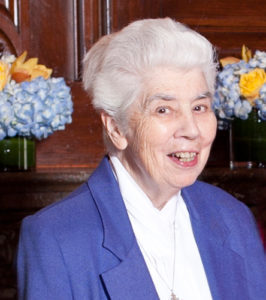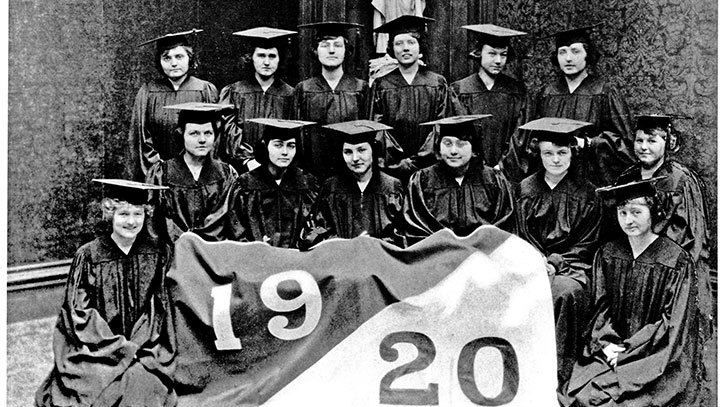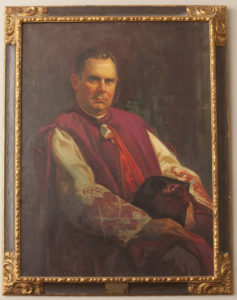1946-55 • Finding Its Place
The end of World War II brought about widespread change and prosperity across the nation, and St. Joseph’s College and its students quickly embraced and considered their place in this different world. New faculty with a wide range of international experiences joined the SJC community, and discussions about the post-war order, the United Nations, and the College’s role in this new society consumed students and faculty.
Under the new leadership of Monsignor William T. Dillon, the College continued to expand its physical presence with a new building, purchased at 256 Clinton Ave., to house priests while they worked as professors on campus.
Sister Mary Florence Burns ‘46, C.S.J., Ph.D.
Former vice president for academic affairs is SJC’s living legacy
If you’re familiar with SJC Brooklyn, then you’re likely familiar with S. Mary Florence Burns.
Many graduates influence their alma mater after graduation. Fewer actually shape it. For more than 60 years, 1946 SJC graduate S. Mary Florence, C.S.J., Ph.D., now an academic vice president emerita, has helped elevate the academic integrity of St. Joseph’s.
“As vice president for academic affairs, S. Mary Florence played a key role in the development of SJC Long Island, and she guided its growth for many years,” said S. Elizabeth A. Hill, C.S.J., J.D., president of SJC from 1997 to 2014. “When I became president, she shared her wisdom and experience with the generosity and graciousness that is so characteristic of her.”
Before working in administration, S. Mary Florence was an associate professor of English at SJC. From 1950 until she succeeded S. John Baptist Hull as academic dean in 1969, she taught courses in medieval literature, Dante, Shakespeare and 18th-century English literature.
“S. Mary Florence was a young, dynamic, exciting and challenging teacher when I first met her,” S. Elizabeth said. “She taught a wide range of courses … and she was brilliant in all of them.”
As academic dean, S. Mary Florence developed curricula, courses and methods of instruction, acting as a chief adviser to two presidents, S. Elizabeth and S. George Aquin O’Connor.
“Each phase of the College’s history has had its own challenges, and to date, we have been able to meet those challenges, but we’ve met them by being adaptable,” S. Mary Florence said. In 2003, SJC renamed the building at 245 Clinton Ave., Burns Hall, to honor S. Mary Florence’s devotion to the College.
– DAVID HENNE



